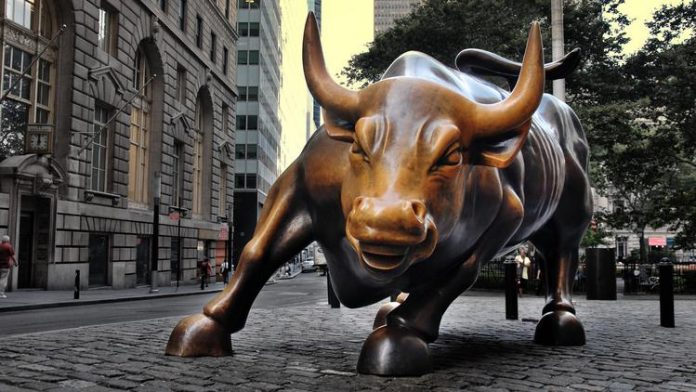Stocks opened lower this morning following some wild futures activity. Today, it was the Fed’s favorite inflation indicator – the personal consumption expenditures price index – that had sentiment flip-flopping in pre-market trading. The index climbed 4.9% year-over-year (YoY) in December, slightly beating the consensus estimate (+4.8% YoY). That’s the largest yearly increase for the personal consumption expenditures price index since 1983.
Personal incomes, meanwhile, rose 0.3% month-over-month (MoM) vs. +0.4% MoM expected. Nominal spending fell 0.6% MoM, matching the consensus estimate. The last time spending dropped MoM was back in February 2021.
When adjusted for inflation, real personal spending sunk a whopping 1.0% MoM but remained up 7.1% YoY.
Overall, the data only provided further evidence for our current hypothesis: that the US economy is slowing down opposite inflation, which continues to rise.
This dealt a blow to dovish hopes this morning as the markets priced in almost five rate hikes for the year.
This kind of reaction from Treasurys makes sense if the Fed is truly set to raise rates in a meaningful way. But to any investors who’ve been paying attention since 2018, that should not be the expectation. Back then, the Fed tried to hike rates when the economy was strong, and inflation was below target. The market collapsed in response to the rate increases and plunged further through the 2018 holiday season. Fed Chairman Jerome Powell eventually capitulated and lowered rates.
In 2022, we’ll probably see a similar situation play out. The Fed will raise rates in March (and possibly even one more time after that) before lowering them by year’s end due to an equity implosion. Keep in mind also that March’s rate hike is unlikely to be a big one. The US government won’t be able to handle a sizable increase in rates due to its immense debt load.
Neither will debt-laden corporations nor consumers. Instead, Powell will barely nudge rates higher (if at all) while providing dovish forward guidance.
Amazingly, that’s not what Wall Street’s predicting. The major banks really believe that almost five aggressive rate hikes are coming down the pipe. JPMorgan (NYSE: JPM) CEO Jamie Dimon even said seven rate hikes wouldn’t be out of the question.
Is that a realistic expectation to have, though? Over the last year, the Fed talked about raising rates and the dangers of inflation but did very little to combat it outside of a QE taper. And inflation is still rising despite the reduction in monthly asset purchases.
Remember how both Powell and Treasury Secretary Janet Yellen admitted that inflation was no longer “transitory?” late last year? Their recent actions (or inactions), however, suggest that they still think it is.
Powell and Yellen like to sound tough in their forward guidance, yet they refuse to make any truly hawkish policy decisions. Yellen even went so far as to berate Congress for penny-pinching last year during Biden’s push to pass a bloated infrastructure bill.
And so, as the February FOMC meeting inevitably arrives next month, all eyes will be on Powell’s post-meeting press conference. Will he say that a rate hike’s officially on the books for March? If so, how big will it be?
Powell won’t provide concrete answers to either question, though. Instead, he’ll tell investors that a March rate hike is still “highly likely” without quantifying its size. Powell will then remind the market that the Fed wants to remain “nimble,” too, should things go bad.
This sets the stage for a few minor rate hikes followed by a market “crunch.” Several months later, Powell would then step in and lower rates as the US economy enters a recession.
Keep in mind, the scenario I just laid out is by no means guaranteed to happen. Nobody has a crystal ball. That’s doubly true when it comes to predicting monetary policy.
But it should be the working theory for rational investors who understand the relationship between rates, debt, and the US economy. I know it’s a grim outlook. And it’s certainly not what bulls want to hear with the major indexes sitting at the bottom of a rapid correction.
However, it’s what the market needs to realize as March approaches. If the rate hike comes in lower than expected, stocks could easily rally in response. Longer-term, though, a true bear market seems inevitable should the Fed continue down this path.
Which, according to Wall Street, involves raising rates to market and economy-wrecking levels.








